We asked grad students from UCSC’s Science Communication program to tackle some of the top water questions facing Santa Cruz County. Here’s what they found.
How does it work to treat wastewater for human consumption? Can we trust that it’s safe?
Astronauts drink it. People on fancy yachts drink it. And wastewater experts agree: Recycled toilet water makes good drinking water. Some California communities, like Orange County, already do this. Santa Cruz does not—yet.
Wastewater is quite clean when it exits the Santa Cruz Wastewater Treatment Facility. In primary treatment, heavy material falls and gets pumped out, while light material floats and gets skimmed off, explains interim operations supervisor Amanda Bird. In secondary treatment, helpful microbes consume organic material, then get removed. Finally, UV light disinfects the water, and gravity takes it into the ocean.
Recycling that discharge into drinking water would require additional steps, called “advanced treatment.” “You blast it with every chemical and UV and ozone and energy source you could possibly think of,” says Terry McKinney, water production superintendent at the Santa Cruz water department. Reverse osmosis removes salts, carbon filters trap tiny particles and ozone obliterates any remaining organisms. Finally, technicians add minerals to the ultra-clean water for stability.
The Soquel Creek Water District is building such a facility. It will pump in some of Santa Cruz’s treated wastewater for advanced treatment, but the output won’t go directly to taps. Instead, Soquel will inject it into their aquifer to stave off saltwater intrusion.
California regulations do allow us to drink advanced-treated wastewater—but only if it’s routed through nature first, a process called “indirect potable reuse.” The detour through nature helps break the psychological link with the toilet. And the environmental barrier is an insurance policy, says Bird: “When it comes to public health, you can’t have any questions whatsoever.”
To recycle its wastewater for potable reuse, Santa Cruz would have to build an advanced treatment facility and pump the cleansed water uphill to the Loch Lomond reservoir for mixing. It would eventually return, along with river water, to the existing drinking water facility for final treatment.
With traditional supplies at risk, potable reuse could add water security for the Santa Cruz community.
— Elise Overgaard
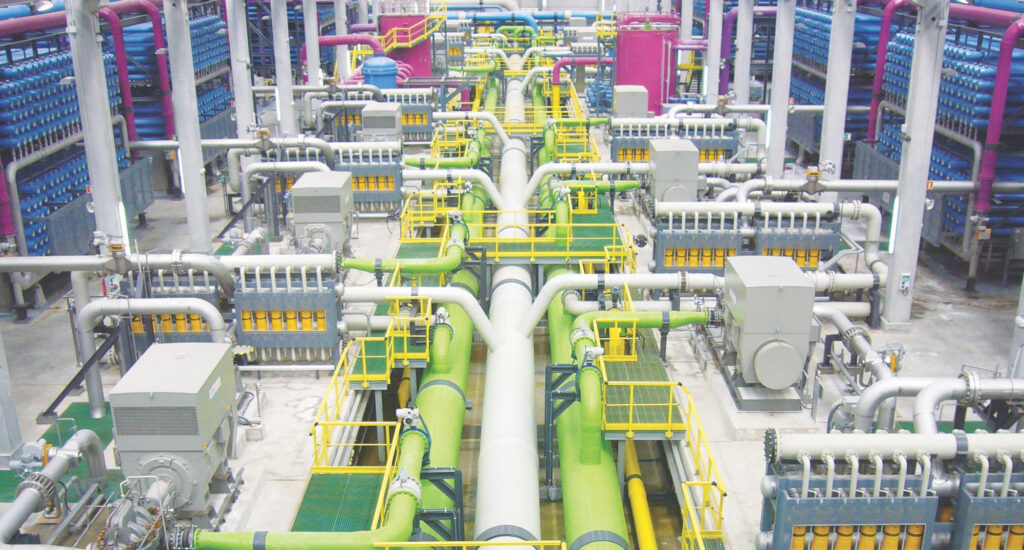
Can we enlarge current reservoirs or build another dam to add more reservoir space?
When rains lash down during our wet season, we’d love to save that water for the dry days ahead. Reservoirs do catch a fraction of the runoff. But increasing the size of our geographic rain buckets—or building new ones—is a tall order.
Many Bay Area reservoirs, including Loch Lomond north of Santa Cruz, were designed to be refilled every year by “winter gully washers,” says Rosemary Menard, director of the Santa Cruz water department.
But storing more water requires bigger, taller dams. Some dams were built with future increases in mind. Loch Lomond’s Newell Creek Dam, completed in 1961, was not.
Even for newer dams, increasing the height is a slow-moving, bureaucratic affair, says engineering manager Ryan McCarter at the Santa Clara Valley Water District. For example, higher water levels might harm important habitats or submerge privately owned land.
“There are as many attorneys as there are engineers on these [reservoir expansion projects] sometimes,” McCarter says. “Design and engineering and construction is really the easy part.”
In rare cases, water managers replace an existing dam with a larger one upstream. The proposed Pacheco Reservoir expansion in San Benito County would increase its capacity by a whopping 25 times. But construction would last until at least 2032. Oh, and it will cost $2.5 billion.
Building a new reservoir is even more daunting. There aren’t many suitable locations left, Menard says. Earthquake fault lines and the environmental impacts of damming valleys are the biggest barriers.
Rather, says Menard, our best storage option may not be above ground, but below. Aquifer storage and recovery, as it’s called, injects treated drinking water into groundwater basins. The water is pulled up later when it’s most needed.
Santa Cruz is testing the concept. In 2022, the county put 100 million gallons into two wells in the winter and took out 80 million in the summer. Menard’s team hopes to invest more water in these subterranean savings accounts.
— Elissa Welle
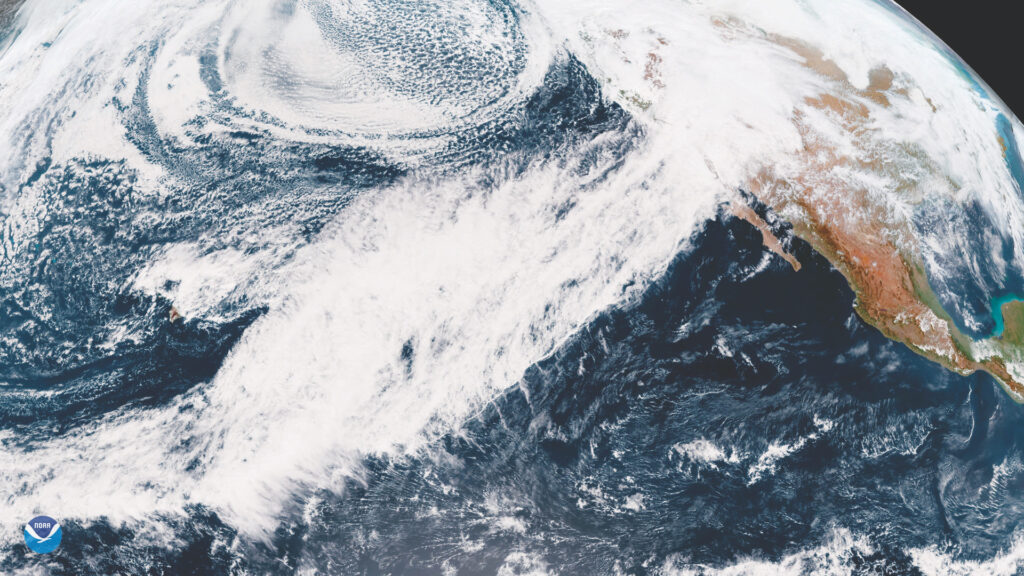
If we’re facing fewer storms, would seeding clouds help wring more rainfall out of them?
As California dries out, cloud seeding might sound like the savior we need. But this rain-generating method only helps slightly, in specific conditions—and the Bay Area is not such a place.
Cloud seeding is a type of weather modification. Its goal is to squeeze more rain or snow from dense, wet clouds. Promoters claim they can boost water supply, bulk up ski hills, break up crop-damaging hail, dissipate fog from airports and more.
In the summer, airplanes fly through warm clouds to disperse tiny salt grains into their fluffy wisps. In theory, each “nucleus” attracts water vapor until it becomes heavy enough to rain down. In the winter, technicians turn on mountain-based smoke generators to launch silver iodide or dry ice particles. These seeds spark ice crystals to grow, and they fall as snow or rain.
Moisture and clouds must be present, says Jake Serago, cloud seeding coordinator for the State of Utah, where conditions are ideal to enhance snowfall. “It’s not cloud making. It’s cloud seeding.” Indeed, practitioners aim for clouds that are dying through evaporation and try to coax out more raindrops.
“These are systems on the edge of precipitation,” says UCSC atmospheric scientist Patrick Chuang. “But in Santa Cruz, there aren’t a ton of clouds that are close to precipitating. When we get rain, we get rain.”
In fact, the Santa Cruz Mountains produce the same effect sought by cloud seeders. As wet systems sweep inland, the mountains push the clouds higher and squeeze out more rain. Once clouds reach the San Jose “rain shadow,” prospects are again bleak.
“You are fighting an uphill battle because you’ve lost most of the moisture over the mountains and the air is moving downwards,” says Chuang. “Air that is going downwards is incredibly unfavorable for making clouds.”
Even in the best cases, cloud seeding might spike rain or snow by about one percent, Chuang says. But here, he states, “It’s just not going to work.”
— Isabel Swafford
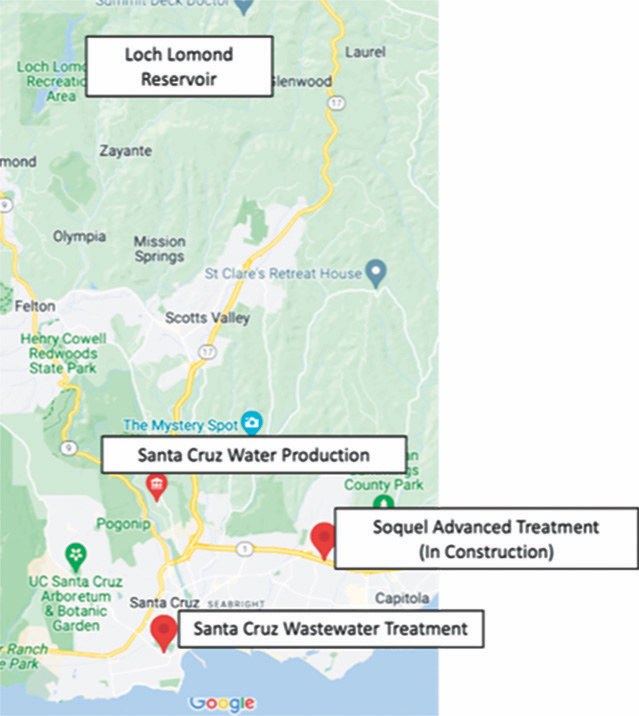
How can we store more storm runoff before it flows into the ocean?
It’s upsetting to see cascades of precious water from winter storms flow down our streets or slopes and then disappear. But researchers are creating ways to capture some of this deluge—and homeowners can play a small role, too.
“Storm water” is an umbrella term for “water that flows off of the landscape during intense rain events,” says UCSC hydrologist Andrew Fisher. We can’t and shouldn’t try to collect all of it, Fisher says. In urban spaces, the goal is to usher water away from buildings and streets as quickly as possible to minimize property damage and flooding.
In rural Santa Cruz County, there’s only one large catch basin to collect extra water: the Loch Lomond reservoir. Although some water seeps into the ground, most storm runoff flows to the ocean via drains, streams and rivers.
But we can indeed store some of that bounty for later use in our fields and yards. Storm water isn’t safe to drink, but it’s a great thirst-quencher for parched plants and crops. “That’s not just undoing a negative impact; that’s actually creating a positive event!” Fisher explains.
In southern Santa Cruz County and northern Monterey County, agricultural demand for groundwater has exceeded supply. To rehydrate parched aquifers, Fisher and other researchers have installed “percolation ponds” to collect storm runoff. Rain from as much as 200 acres of land is diverted via channels, culverts and pipes into these ponds. Once there, water gradually filters down below the plots, refilling natural aquifers. This filtration cleans up the storm water and restocks adjacent wells for growers to use on sunny days.
Storing storm flows for farmers makes sense, Fisher says. But residents can also chip in on a smaller scale by installing rain barrels—containers that collect water from gutter downspouts. Fisher uses one at his home. Just one inch of rain streaming from a 1,000-square-foot roof can yield 625 gallons in a few such containers to sustain your water-smart garden.
—Kate Hull
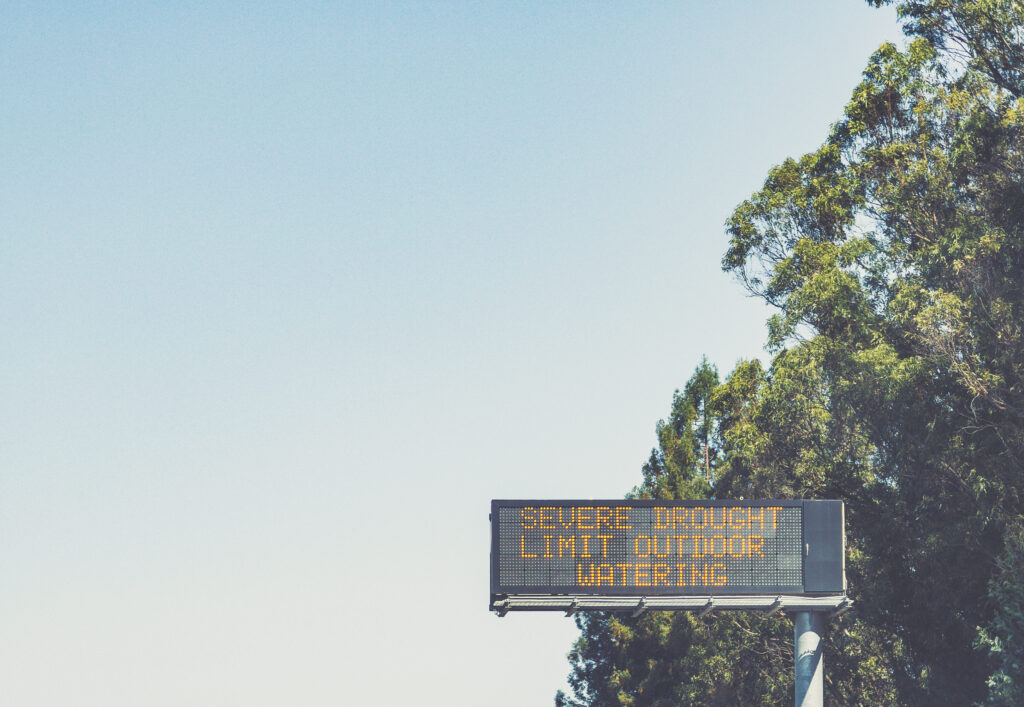
What are the biggest environmental problems caused by desalination? Are new methods helping?
At a dozen sites along California’s coast, desalination plants slurp up seawater to produce water that’s safe to drink. But they also churn out salty brine and greenhouse gases, and they may suck in tiny marine organisms. While those barriers—and high costs—have tainted desalination, new technologies have made it more palatable for water districts that face dwindling supplies.
Desalination plants pump in salty water and push it through special membranes. This process demands intense pressures and a lot of electricity. A medium-sized desal plant, like the one previously proposed in Santa Cruz, has about the same carbon footprint as six supermarkets.
Many modern plants bury their water intakes below the seafloor to avoid sucking in critters. Others use bars and fine screens over their pipes to protect all but the tiniest animals. “It’s not an overwhelming problem,” says UCSC coastal geologist Gary Griggs, but one that affects perhaps a few hundredths of one percent of the life in surrounding waters.
The brine created by desal plants is twice as salty as its source—posing a risk to sensitive species, such as corals and sea grasses. To avoid this, desal managers use excess seawater or treated wastewater to dilute the brine to ocean-like saltiness before dispersing it in the open sea.
These methods have worked in California. Near San Diego, the Carlsbad Desalination Plant—the state’s largest—meets the water demands for up to 400,000 people. A study led by UCSC researchers in 2019 found that while waters near the plant’s discharge were saltier than federal limits, the diluted brine had no significant impacts on marine life.
Closer to home, the Marina Coast Water District operated a small desal plant for years in Sand City. “There are a number of technologies to reduce impacts on the environment,” says general manager Remleh Scherzinger. “It can be done.”
For now, though, Santa Cruz citizens and a water department advisory committee have made it clear that desalination is a low priority here. If that changes, newer technology should make desal easier to swallow.
— Luis Melecio-Zambrano
A recent study suggested that California might get gigantic “megastorms” every few decades. How would such an event impact the Central Coast?
Drought-ridden California is desperate for water. But be careful what you wish for: We might soon be swimming in it.
In the past, storms of this gravity came every century or two. Now, a new model suggests California has about a two-thirds chance to see at least one super-soaker in the next 40 years. The culprit: climate change.
“There is every reason to believe we will see flood events significantly larger than anything we’ve observed in the 20th or 21st century so far,” says UCLA climatologist Daniel Swain, coauthor of the study.
Earth’s warming is intensifying our droughts and heat waves. But cool wet weather events also will become more volatile, Swain says. The risks are highest during extreme El Niño years, when the tropical Pacific Ocean becomes a vast heat engine.
Under certain conditions, disrupted winds and currents near the equator will usher long humid tendrils of air toward California in a series of atmospheric rivers. Warmer air absorbs more moisture, engorging these rivers. A parade of such storms could dump 45 inches of rain here in one month—more than our annual average.
“That kind of rain would challenge any kind of landscape, anywhere in the state,” says Mark Strudley, a flood control manager for Santa Cruz County.
It seems unlikely, but it has happened before. In the “Great Flood of 1862,” more than 40 days of rain birthed an inland sea spanning a 300-mile stretch of the Central Valley.
Locally, such torrential downpours would overwhelm smaller rivers and urban storm drains. Flash floods and debris would threaten downtown Santa Cruz and San Jose, as well as riverside communities throughout Pajaro and Santa Clara valleys. Saturated slopes in the Santa Cruz Mountains could fail in sudden, deadly mudslides.
To protect the most vulnerable areas, Central Coast civil engineers are catching up on overdue dam and levee projects. But beyond a certain scale, says Strudley, only one thing matters: “Moving people out of harm’s way.”
—Roxanne Hoorn
Have we entered a long-term drought in California? What do new climate patterns mean for our likely annual rainfall?
As global temperatures rise, warmer air will deplete California’s snowpack and evaporate more water from soils, plants, lakes and rivers. But as far as climate scientists can tell, our state’s average annual rainfall may hold steady—at least in terms of total volume.
How and when those rains will arrive is a different story.
“A lot of the models envision scenarios in which rainfall doesn’t really decrease, but it’s distributed more variably,” says UCSC environmental scientist Michael Loik. “So we don’t necessarily get less rainfall on average, but it comes in fewer, bigger storms spaced farther apart.”
In idyllic winters of the past, we welcomed many seasonal showers and the occasional heavy storm. But the climate crisis has flipped the script. Now, we must brace for brief, powerful winter deluges separated by long dry spells. This pattern of see-sawing extremes—dubbed “whiplash weather” by some scientists—alternately inundates and desiccates our reservoirs. It also sets off mudslides like the deadly ones near Santa Barbara in 2018.
Whiplash weather will play out over longer timescales, too. Consider recent local conditions: Santa Cruz received 71% of its average rainfall last year and just 53% the year before. But from December 2016 through February 2017, almost twice as much rain as normal pelted our sidewalks and yards.
That pattern will likely intensify around the state, with a few super-wet years punctuating many consecutive dry ones. The two extremes should balance out, keeping precipitation averages stable—as they have been in Santa Cruz for at least 125 years.
Precipitation paints only half the picture, though. As the warming atmosphere sucks more water from our landscape, even record wet years might not pick up the slack. So while rainfall might break even, drought conditions could become the standard.
“We think about the wet years being the norm and the dry years being the extremes,” says Loik. “Maybe we should be thinking about it the other way around.”
— Sean Cummings
Is saltwater intrusion a big problem for our groundwater? How do we prevent it from happening?
“Seawater intrusion is the untold story,” says Ron Duncan, general manager of the Soquel Creek Water District. It happens silently under our feet, and it poses a real threat to groundwater near the shore. We can pump less water from wells and inject fresh water to flush out salts—but the ocean is relentless, and it’s a constant battle.
Many Bay Area communities rely on coastal aquifers: subterranean spaces amidst soils, sand and rocks where rainwater percolates and settles. These stores of fresh water can extend for miles, connecting to the coastline.
Mineral-rich seawater exerts a steady force underground as well, creating a “mixing zone” that usually lies close to shore. In an undrawn aquifer, this zone shifts slightly with the tides and occasional storm surges. But pumping too much water from an aquifer can lower the pressures that hold back the sea—allowing saltwater to advance miles inland. Even small amounts can ruin groundwater for people and crops alike.
“By the time people see the effect, it’s been going on for a long time,” says UCSC hydrologist Andrew Fisher. And after just 10 to 20 years of intrusion, he notes, it could take nearly 100 years to replenish an aquifer.
In 2016, the Soquel district’s Mid-County Groundwater Basin was classified as critically overdrafted due to invading saltwater—a title held by just 21 of the 500 groundwater basins in California. The district’s Pure Water Soquel project, set for completion in 2024, will try to stem those tides. A new treatment facility will take two million gallons of treated storm runoff and wastewater daily from Santa Cruz, sterilize it further to highly stringent standards and inject it into recharge wells to create what Duncan calls a “uniform hydraulic barrier”—a first line of defense to push back the ocean’s contaminants.
Other monitoring wells from 41st Avenue to La Selva Beach act as early alert systems to spot the sea’s unceasing efforts to push inland.
—Shannon Banks
Coastal fog is a huge part of our water cycle and daily life. Will it go away as the ocean and atmosphere warm up?
The chilling ground cloud that muffles our summer mornings likely won’t disappear from Santa Cruz as the climate changes. Although we might see less of it, these trends are difficult to predict—like fog itself.
Our “June Gloom” begins when a seasonal high-pressure system in the central Pacific, north of Hawaii, brings warm moist air to our shores. That humid flow meets the cold ocean surface, kept frigid by deep upwelling water. As the two mingle, fog is born. Warm inland air pulls this wraith up the coastal slopes, and as the land cools it flows back to sea. Like the landscape, we breathe it too.
Fog’s very existence requires stark temperature contrasts. “If you warm up the planet, you’re going to change how that system works,” says ecologist Todd Dawson of UC Berkeley. Different patterns of warming may enhance fog in some places and make it fizzle in others. Research led by Dawson suggests fog along coastal California has decreased since the 1950s, but with notable variation.
In Santa Cruz, a warming ocean combined with hotter summer air in the Central Valley could suck more fog from its lair above the Pacific onto our shores, says UCSC environmental toxicologist Peter Weiss-Penzias. Only time will tell.
Dawson does worry that if climate change lessens summertime fog, coastal plants that draw sustenance from it—including our iconic redwoods—will suffer.
To better understand the fickle nature of fog and its future, researchers collect it. Both Weiss-Penzias and environmental scientist Daniel Fernandez of CSU Monterey Bay capture fog droplets on soccer-net-sized screens on their campuses. A good “fog event” might yield a couple of liters of water in one collector, says Fernandez. If scaled up, harvested fog could supplement a bit of our needs for agriculture and gardens.
Every year, Fernandez’s email inbox fills up with questions from do-it-yourself fog harvesters across the globe. “Not only is there a fog season, but there’s also a fog query season,” he says.
—Anna Marie Yanny



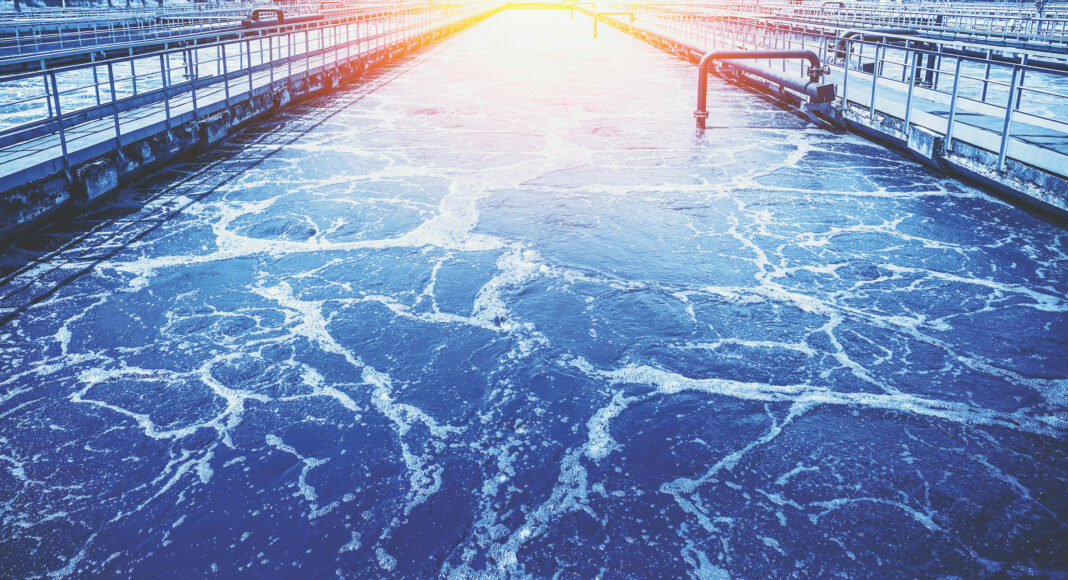











really well written and informative.
Loved reading this. Thank you for the information!
Excellent overview of our current water challenges. Let’s invite these brilliant minds to assess some of our other complex local/state/planetary problems!